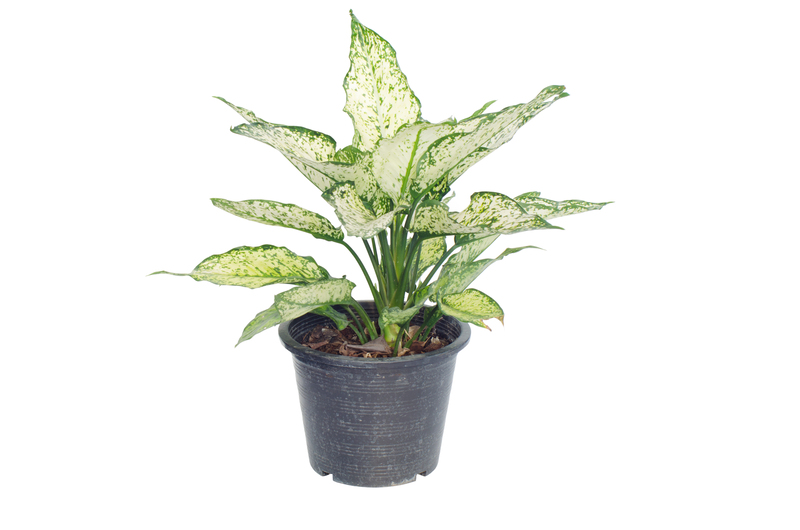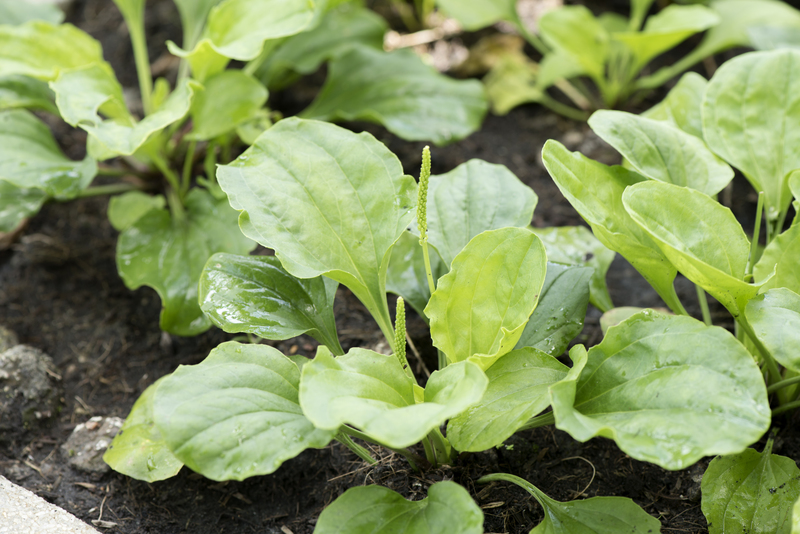Explore the Heights of Horticulture with Vertical Gardens
Posted on 15/09/2025
Explore the Heights of Horticulture with Vertical Gardens
Vertical gardens are revolutionizing the way we approach gardening and urban green spaces. By taking horticulture to a new dimension--quite literally, upwards--these living walls are transforming concrete jungles into lush, vibrant oases. Whether you're an apartment dweller with limited space or a business owner seeking to boost your premises' aesthetic appeal, vertical gardens offer an innovative, sustainable solution for everyone. Let's delve into the world of vertical gardening and discover why it is fast becoming the future of modern horticulture.
What Is a Vertical Garden?
A vertical garden, also known as a living wall or green wall, is an installation in which various plants are grown vertically using a supporting structure. Unlike traditional horizontal gardens, vertical gardening utilizes walls or freestanding frameworks to cultivate a wide variety of plants such as herbs, succulents, flowers, and even vegetables.
- Affordability: With clever DIY solutions, vertical gardens are accessible to nearly everyone.
- Space-saving: Ideal for urban dwellers and small spaces.
- Versatility: Can be installed indoors, outdoors, or in semi-covered areas.

Benefits of Vertical Gardens
The surge in interest in living walls is no accident. These innovative horticultural installations boast a range of environmental, aesthetic, and even psychological benefits.
1. Maximizing Limited Space
*Vertical gardening* is a perfect solution for those with minimal ground space. Small apartments, townhouses, and commercial spaces can be transformed into green sanctuaries with a well-planned vertical garden.
2. Improving Air Quality
Nature's air purifiers, plants can absorb carbon dioxide and common atmospheric toxins. Covering walls with vertical greenery helps mitigate air pollution, offering cleaner, fresher air both indoors and outdoors.
3. Enhancing Thermal and Acoustic Insulation
Living walls create an additional layer of insulation, helping to regulate indoor temperatures. They can reduce heat loss during colder months and keep interiors cooler in hot weather. In busy urban settings, vertical gardens also play a role in muffling unwanted noise pollution.
4. Aesthetic Transformation
Vertical gardens offer a stunning, ever-changing display of textures and colors. From minimalist moss walls to lush, bursting collections of tropical blooms, they can provide a dramatic focal point in any setting.
5. Boosting Mental Health and Well-being
Numerous studies show that being around greenery and nature offers substantial psychological benefits. Vertical gardening brings the calming presence of the outdoors inside, reducing stress and fostering a sense of tranquility.
Types of Vertical Gardens
Before diving into your own vertical horticultural adventure, it helps to understand the main types of vertical gardens. Each has unique characteristics and design possibilities.
1. Living Wall Planters
- Consist of interlocking or modular containers.
- Perfect for herbs, succulents, or flowering plants.
- Simple to install and manage.
2. Trellis and Climbing Gardens
- Utilizes climbing plants (like ivy, jasmine, or tomatoes) that grow up structures such as fences, trellises, or wires.
- Effective for outdoor spaces or balcony gardens.
- Relatively low-cost and low-maintenance.
3. Hydroponic Living Walls
- Plants are grown in a soilless system that utilizes water and nutrients delivered directly to roots.
- Ideal for modern, high-tech installations.
- Offers precise control over plant health and growth.
4. Pocket Gardens
- Fabric or modular vertical pockets attached to a wall or frame.
- Provide flexibility -- swap or replace individual plants easily.
- Excellent for DIY and small-scale projects.
5. Freestanding Green Towers
- Self-contained, vertical column planters suitable for home interiors, patios, or offices.
- Portable and adaptable to various environments.
- Great for culinary herbs or leafy greens.
How to Design a Vertical Garden
Designing your own vertical garden is both an art and a science. Whether you choose a DIY project or hire professional installers, consider the following steps to ensure vibrant, healthy success.
1. Choose the Right Location
Consider factors like light exposure, humidity, and protection from weather extremes. South or east-facing walls often provide optimal sunlight for a wide variety of plants. For indoor systems, supplementary grow lights can help.
2. Select Suitable Plants
Match plants to your environment. For sun-drenched outdoor walls, opt for drought-tolerant species like succulents, sedums, and lavender. Shaded walls suit ferns, mosses, and shade-loving herbs like mint or basil.
- Low-maintenance options: Pothos, philodendron, spider plant.
- Flowering choices: Petunias, begonias, orchids.
- Edibles: Strawberries, lettuce, chives, parsley.
3. Select the Right Structure
Your structure must support the weight of wet soil and fully grown plants. Choose quality materials--modular planters, plastic or metal grids, fabric pockets, or hydroponic panels.
4. Plan for Irrigation
Consistent watering is key. Many large living walls incorporate built-in irrigation systems that distribute water evenly throughout vertical planters. For smaller indoor gardens, manual watering can suffice.
- Drip irrigation systems are efficient and conserve water.
- Hydroponic systems recycle water, reducing waste.
5. Provide Plant Nutrition
Plants in vertical gardens may deplete their nutrient supply quickly. Use slow-release fertilizers or organic compost to keep them thriving.
6. Prioritize Maintenance
Prune regularly, remove dead leaves, and monitor for pests. Well-maintained vertical gardens will flourish for years, rewarding your efforts with dense, healthy foliage.
Best Plants for Vertical Gardening
Select plants based on light, humidity, and the specific vertical garden design you choose. Here is a handy list of top choices:
- Succulents--Ideal for drought-tolerant living walls.
- Boston fern--Great for shaded, high-humidity spaces.
- Philodendron--Thrives indoors, trailing beautifully.
- Orchids--Bring color and elegance to indoor walls.
- Herbs--Mint, basil, thyme, rosemary, and parsley offer culinary rewards.
- Spider plant--Low maintenance and effective at purifying air.
- Peperomia--Compact, drought-tolerant, colorful foliage.
Vertical Gardens Around the World
Across the globe, innovative architects and horticulturists are using vertical garden systems to create green masterpieces:
- Musee du Quai Branly, Paris--Patrick Blanc's famous 800m? living wall features over 15,000 plants.
- One Central Park, Sydney--A 1,120-square-meter vertical garden encases this residential tower, providing beauty and improved air quality.
- CaixaForum Madrid--A striking green wall with hundreds of plant species, juxtaposed with urban architecture.
Residential and Urban Applications
Homeowners, restaurateurs, and city planners are integrating green walls into interiors, facades, cafes, shops, and community spaces--bringing nature's benefits right into the heart of bustling urban centers.
DIY Vertical Garden Ideas
You do not need a professional team or a massive budget to enjoy the magic of a vertical garden at home. Here are some creative, easy solutions:
- Reuse old pallets--Fill slats with potting soil and tuck in vibrant annuals.
- Hang shoe organizers--Plant herbs or annual flowers in the pockets and hang on a sunny fence or wall.
- Stacked pots or recycled containers--Arrange vertically for a whimsical, space-saving kitchen or balcony herb garden.
- Modular wall planters--Purchase readymade panels for a neat, modern look.
*Remember*: Always ensure your structure is secure, particularly if installing indoors or on a balcony.
Sustainability and Environmental Impact
Vertical gardens do more than beautify spaces--they are champions of urban sustainability. Their environmental impact includes:
- Reducing urban heat island effects--Green walls cool down city buildings and pavements.
- Improving urban biodiversity--They provide microhabitats for birds, beneficial insects, and pollinators.
- Mitigating stormwater runoff--Plants absorb and filter rainwater naturally.
- Reducing carbon footprint--Absorbing carbon dioxide and producing oxygen helps combat pollution.
Aligning with trends in green technology and smart cities, vertical horticulture balances ecological needs with urban development.
Challenges and Solutions in Vertical Gardening
Vertical garden systems present unique challenges compared to traditional gardening:
- Watering and drainage: Overwatering can lead to root rot; under-watering causes plant stress. Install a drip system or self-watering planters for consistency.
- Nutrient depletion: Plants might need supplemental feeding; use slow-release organic fertilizers.
- Plant selection: Not all species thrive vertically; select adaptable, hardy varieties.
- Structural load: Living walls can be heavy--ensure the wall or frame is strong enough to bear weight, especially when saturated with water.
- Pests and diseases: Check regularly for pests, mold, or fungus; keep foliage pruned and air flowing.
With careful planning, these hurdles are entirely manageable, allowing you to enjoy your vertical oasis worry-free.

Vertical Gardens: The Future of Urban Landscapes
The adoption of vertical gardens signals a major shift in how city-dwellers, architects, and property developers approach green space. Their benefits transcend aesthetics, addressing critical issues of space scarcity, pollution, biodiversity loss, and the growing need for urban resilience. As technology advances, expect to see even more innovative living wall designs integrated into public and private spaces worldwide.
Why You Should Consider a Vertical Garden
- Boost property value--A stunning living wall increases curb appeal and market value.
- Improve quality of life--Enjoy cleaner air, improved mood, and the pleasure of gardening.
- Grow food at home--Harvest fresh herbs and veggies right from your wall!
- Express creativity--Artfully combine colors, textures, and shapes for a personalized living mural.
Conclusion: Rise Up with Vertical Gardening
In summary, vertical gardening is not just a passing trend--it's a powerful tool for transforming modern life. *Embracing the heights of horticulture* with vertical gardens means making the most of your available space, promoting sustainability, and enriching your surroundings with natural beauty and vitality. Whether you're an urbanite craving greenery or an innovator looking to push boundaries, consider joining the ever-growing movement of vertical gardeners. Rise above the ordinary, and let your walls come alive!
Ready to start your vertical garden journey? Explore designs, pick the perfect plants, and watch as your environment flourishes in ways you never imagined. Happy growing!

